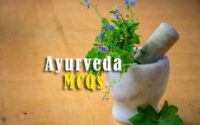Microbiology Important Question
Microbiology Important Question Papers help the aspirants in the preparation. Important papers give an overview of the exam paper and the way questions are going to be. However, aspirants who are going to appear for examinations can get the Important Question Papers pdf for free.

Also, check the exam pattern and syllabus details before going to the Microbiology Important Question Papers. Microbiology exam Important Question Papers paper are here. Aspirants can find the respective download links for Microbiology Important Question Papers Pdf. check the latest Microbiology Important Question Papers on our page.
Important Question Papers on Microbiology
1. Which herpes virus is most commonly associated with a dangerous fetal infection ?
(1) Herpes simplex
(2) Herpes zoster
(3) EBV
(4) CMV
2. Which of the following is true about hepadnaviruses ?
(1) All have double stranded RNA
(2) All have reverse transcriptase
(3) All have V oncogene
(4) All have double capsid
3. Bacteriophage are readily counted by 3 the process of :
(1) Immunoassays
(2) ELISA
(3) Plaque assays
(4) Tissue cell culture
4. A type of cell culture that can reproduce for an extended number of generations and is used to support viral replication is a:
(1) Primary cell culture
(2) Continuous cell line
(3) Cell strain
(4) Diploid fibroblast cell
5. Aspergillosis is recognized in tissue by the presence of :
(1) Metachromatic granules
(2) Psuedohyphae
(3) Septatehyphae
(4) Budding cells
6. Infection with dermatophyte is most often associated with :
(1) intravenous drug abuse
(2) inhalation of the organism from contaminated bird feces
(3) adherence of the organism to perspiration moist skin
(4) Fecal-oral transmission
7. Fungal cells that reproduce by budding are seen in the infected tissues of patients with :
(1) Candidiasis, cryptococcosis, and sporotrichosis
(2) Mycetoma, candidiasis and mucormycosis
(3) Tinea corporis, tinea unguium, and tinea versicolor
(4) Sporotrichosis, mycetoma and aspergillosis
8. Each of the following statements concerning Cryptococcus neoformans are correct EXCEPT-
(1) Its natural habitat is the soil, especially associated with pigeon feces.
(2) Budding yeasts are found in the lesions.
(3) The initial site of infection is usually the lung.
(4) Pathogenesis is related primarily to the production of exotoxin A.
9. Fungi often colonize lesions due to other causes. Which of the following is least likely to be present as colonizer,
(1) Candida
(2) Sporothrix
(3) Mucor
(4) Aspergillus
10. A 35-year-old man with a CD4 count of 50 presents with a skin nodule on his chest. The nodule is about 3 cm in diameter and is not red, hot, or tender. He says it has been slowly growing bigger for the past 3 weeks. You biopsy the nodule, and the pathologist calls to say that the patient has disseminated cryptococcosis. Which one of the following is the BEST description of what the pathologist saw in the biopsy specimen ?
(1) Non-septate hyphae
(2) Spherules
(3) Septate hyphae with low-angle 3 branching
(4) Budding yeasts with a thick capsule
11. Each of the following statements concerning mucormycosis is correct EXCEPT :
(1) Tissue sections from a_ patient with mucormycosis show budding yeasts.
(2) Ketoacidosis in diabetic patients is a predisposing factor to mucormycosis.
(3) Hyphae typically invade blood vessels and cause necrosis of tissue.
(4) The fungi that cause mucormycosis are transmitted by airborne asexual spores.
12. Which one of the following fungi is MOST likely to be found within reticuloendothelial cells ?
(1) Cryptococcus neoformans
(2) Histoplasma capsulatum
(3) Candida albicans
(4) Sporothrix schenckii
13. Each of the following statements concerning fungi is correct EXCEPT :
(1) Thermally dimorphic fungi exist as yeasts at 37°C and as molds at 25°C.
(2) Molds are fungi that have elongated filaments called hyphae.
(3) Yeasts are fungi that reproduce by budding.
(4) Both yeasts and molds have a cell wall made of peptidoglycan.
14. To inhibits synthesis of DNA which drug is used ?
(1) Caspofungin
(2) Micafungin
(3) Parafungin
(4) None of these
15. A girl who pricked her finger while pruning some rose bushes develops a local pustule that progresses to an ulcer. Several nodules then develop along the local lymphatic drainage. The most likely agent is –
(1) Aspergillus fumigates
(2) Sporothrix schenckii
(3) Cryptococcus neoformans
(4) Candida albicans
16. The host of Penicillium marneffe is –
(1) Bugs
(2) Bamboo rats
(3) Wild rats
(4) Cats
17. A network of fine white filaments in the vegetative part of the fungus is called
(1) Septa
(2) Hyphae
(3) Mycelium
(4) Conidia
18. The natural habitat for the Paracoccidioides brasiliensis is –
(1) Soil
(2) Skin
(3) Mud
(4) Water
19. The fungal cell membrane in contrast to human cell membrane is composed of
(1) Sterol
(2) Lipids
(3) Cholesterol
(4) Egrosterol
20. The fungus responsible for ergotism belongs to which of the following fungal divisions ?
(1) Deuteromycota
(2) Oomycota
(3) Zygomycota
(4) Ascomycota
| Previous Year Question | Practice Set |
| Important Question | Viva Question |
| Sample Papers | Quiz |
| Model Papers | MCQs |
| Mock Test | Questions and Answers |
21. Each of the following statements concerning Candida albicans is correct, EXCEPT :
(1) C. albicans is a budding yeast that forms psuedohyphae when it invades tissue.
(2) C. albicans causes thrush.
(3) CC. albicans is transmitted primarily by respiratory aerosol.
(4) Impaired cell mediated immunity is an important predisposing factor to disease.
22. The medium of choice for culturing yeast form of dimorphic fungi is
(1) Brain — heart infusion
(2) Sabouraud’s
(3) Sabouraud’s plus antibiotics
(4) Any medium incubated at 35-37 °C
23. What would be the best temperature to incubate fungi like Candida albicans and Aspergillus fumigatus for antifungal susceptibility testing ?
(1) 25°C
(2) 28°C
(3) 30°C
(4) 35°C
24. A 19-year-old migrant worker from south India is brought to the family doctor complaining of cough, pleuritic chest pain, fever, and malaise. He also complains of a backache and headache. He is found to have an erythematous skin rash on his lower limbs. A chest radiograph reveals several calcifying lesions. Which of the following structures is most likely to be found ?
(1) Broad-based budding yeast.
(2) Septate hyphae branching dichotomously at acute angles.
(3) Spherules with endospores.
(4) Non-septate hyphae with broad angles.
25. Each of the following parasite is transmitted by mosquitoes EXCEPT:
(1) Leishmania donovani
(2) Wuchereria bancrofti
(3) Plasmodium vivax
(4) Plasmodium falciparum
26. Each of the following statements concerning kala-azar is correct EXCEPT :
(1) Kala-azar is caused by Leishmania donovani.
(2) Kala-azar is transmitted by the bite of sandflies.
(3) Kala-azar occurs primarily in rural India.
(4) Kala-azar can be diagnosed by finding amastigotes in bone marrow.
27. Pigs or dogs are the source of human infection by each of the following parasites EXCEPT :
(1) Echinococcus granulosus
(2) Taenia solium
(3) Ascaris lumbricoides
(4) Trichinella spiralis
28. The stool of the patient infected with what parasite is described as steatorrheic or gruelly ?
(1) Balantidium coli
(2) Entamoeba histolytica
(3) Chilomastix mesnili
(4) Giardia lamblia
29. Associated with uveitis or ulceration of the cornea :
(1) Acanthamoeba culbertsoni
(2) Entamoeba histolytica
(3) Balantidium coll
(4) Naegleria fowleri
30. Entamoeba histolytica can be cultured in:
(1) Diamonds medium
(2) CLED medium
(3) NNN medium
(4) Maconkey agar
31. Which of the following acts as a main reservoir of balantidium coli infection in human beings ?
(1) Man
(2) Monkey
(3) Cow
(4) Pig
32. Which protozoan has a unique appearance, with a blue halo, when viewed using ultraviolet fluorescence microscopy ?
(1) Giardia lamblia
(2) Cryptosporidium hominis
(3) Cyclospora cayetanesis
(4) Entamoeba histolytica
33. A non-segmented worm is found during a routine colonoscopy of an individual who reported having abdominal cramps, nausea and vomiting. This worm is likely which of the following ?
(1) Nematode
(2) Fluke
(3) Trematode
(4) Annelid
34. Sabin – Feldman dye test is used in the diagnosis of
(1) Toxoplasmosis
(2) Amoebiasis
(3) Cryptosporiodosis
(4) Trypanosomiasis
35. What is the smallest tapeworm infecting man ?
(1) Taenia sanginata
(2) Taenia solium
(3) Hymenlopis nana
(4) Diphyllobothrium latum
36. Primary amoebic meningioencephalitis is caused by :
(1) Acanthamoeba
(2) Balamuthia spp
(3) Naegleria fowler
(4) Iodamoeba buetschlii
37. In the mode of transmission for Schistosoma mansoni, the penetration is in:
(1) Mucous
(2) Intestinc
(3) Skin
(4) Blood
38. A 30-year-old woman presents to her gynecologist with complaints of vaginal itching and a frothy, yellow discharge. She also complains of painful urination. She admits to being sexually active with several men in the past two weeks. Cultures are negative for bacterial growth, but organisms are visible via a wet preparation on low power. The most likely causal agent is –
(1) Giardia lamblia
(2) Trichomonas vaginalis
(3) Candida albicans
(4) Chlamydia trachomatis
39. The examination of sputum and stool may be necessary to diagnose infection with :
(1) Paragonimus westermani
(2) Trichinella spiralis
(3) Wuchereria bancrofti
(4) Fasciola hepatica
40. The specimen that is LEAST LIKELY to provide recovery of Trichomonas vaginalis is –
(1) Urine
(2) Urethral discharge
(3) Prostatic discharge
(4) Feces
41. Each of the following statements concerning Ascaris lumbricoides is correct except :
(1) Ascaris lumbricoides is one of the largest nematode.
(2) Ascaris lumbricoides can cause pneumonia.
(3) Both dogs and cats are intermediate host of Ascaris lumbricoides.
(4) A lumbricoides is transmitted by ingestion of eggs.
42. Which of the following nematode is a ovo — viviparous ?
(1) Enterobius vermicularis
(2) Trichenella spiralis
(3) Strongyloides stercoralis
(4) Dracunculus medinensis
43. Which of the following is not a bile stained egg ?
(1) Ascaris lumbricoides
(2) Trichuris trichiura
(3) Taenia solium
(4) Ancylostoma duodenale
44. A 35-year-old captain in the army reserves has been plagued by a painful, erosive lesion near his ear lobe since his return from Operation Desert Storm several years ago. He denies exposure to the toxic by-products of burning oil fields. Punch biopsy of the leading edge of the erosion reveals macrophages distended with oval amastigotes. How was this infection acquired?
(1) Contact = with contaminated drinking water
(2) Bite of reduviid bug
(3) Bite of tsetse fly
(4) Bite of sandfly
45. Nystatin is produced from the strain
(1) Streptomyces noursei
(2) Streptomyces aureofaciens
(3) Streptomyces kanamyceticus
(4) Streptomyces fradiae



